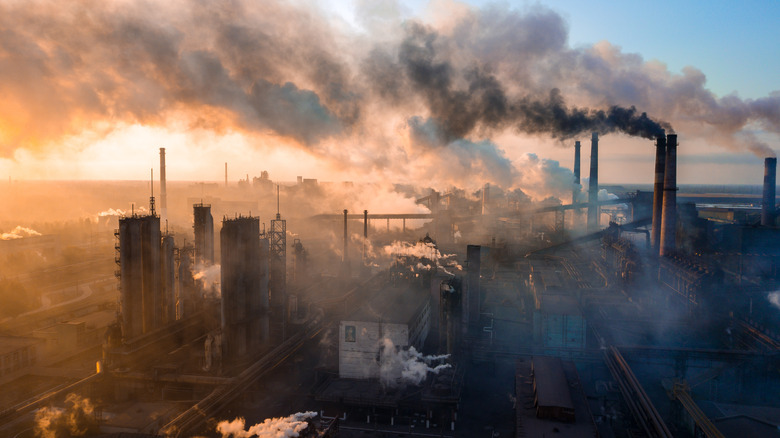The Unexpected Link Between Air Pollution And Pregnancy Complications
Air pollution can come from a variety of sources and is linked with numerous complications for pregnant individuals and their babies. Therefore, it is essential to understand the potential for various pregnancy complications for both the pregnant individual and the baby, sources of air pollution, and how to limit exposure to air pollutants.
When an individual thinks of air pollution, smog or wildfire smoke-filled skies may come first to mind. However, numerous types of air pollution are found both inside and outside.
March of Dimes lists several indoor and outdoor sources of air pollution. Sources include smoke (whether from tobacco products or fires), asbestos, carbon monoxide, ozone, and radon (a gas that comes from the ground and can be tested for in residential settings). Additional sources include, but are not limited to, dust, mold, pollen, fumes from strong chemicals or paint, and the release of various gases and chemicals from factories.
Adverse health effects
Air pollution can have numerous adverse health effects on a pregnant individual and their developing embryo (if early in development) or fetus. A study published in June 2020 in the journal Environmental Research examined the association between pregnancy complications and ambient air pollution.
The study found pregnant individuals in the first trimester to be especially sensitive to various forms of air pollution. Exposure to certain pollutants in the first trimester increased the risks of preeclampsia, gestational hypertension, and gestational diabetes mellitus. Additionally, exposure to one form of air pollution, PM2.5, increased the risk of hypertensive disorders (high blood pressure) throughout the pregnancy.
The United States Environmental Protection Agency (EPA) describes PM2.5 as fine inhalable particulate matter. The problem with this type of particulate is that it is small enough to get deep in your lungs and enter your bloodstream. In addition, the particulates can consist of hundreds of different chemicals.
Aside from risks to the pregnant individual's health, complications that may arise due to air pollution exposure to the developing embryo or fetus include an increased risk of premature birth and low birth weight (per the March of Dimes). Exposure to air pollution may also increase the risk of stillbirth. Additionally, air pollution exposure during pregnancy may affect the child's subsequent breathing ability and learning skills as they develop.
Ways to prevent exposure to air pollution
Some signs that you have been exposed to air pollution long-term include coughing, wheezing, eye and sinus irritation, chronic fatigue, and shortness of breath (per American Pregnancy Association).
If you are pregnant (or just trying to stay healthy and reduce air pollution exposure), the American Lung Association lists numerous measures you can take to reduce your exposure to air pollution. These measures include being aware of the air pollution forecasts where you live, avoiding outdoor exercise when air pollution forecasts are high, and not exercising near high-traffic areas. You may want to consider reducing energy use in your home, avoiding burning wood and garbage, using hand-powered or electric lawn care equipment, and not letting anyone smoke inside the house.
While you may not be able to control the air quality outside, there are steps you can take to make the air inside your home cleaner and safer. Actions you can take include testing your home for asbestos or radon as indicated and ensuring you have carbon monoxide detectors installed (per March of Dimes). Installing an air purifier can also reduce exposure, according to the EPA.
If you are pregnant and concerned about exposure to air pollution and its effects on your health, reach out to your healthcare provider for guidance and the next steps. They can help determine if you should be seen or need additional monitoring throughout your pregnancy.



